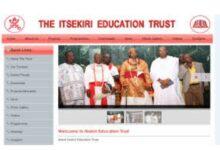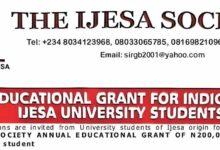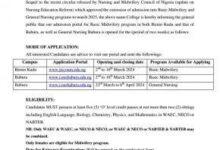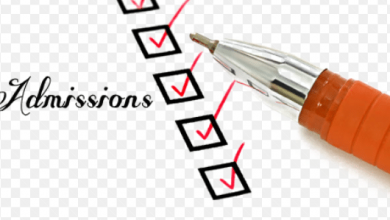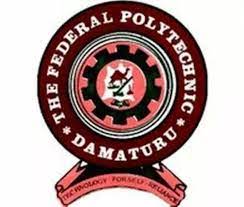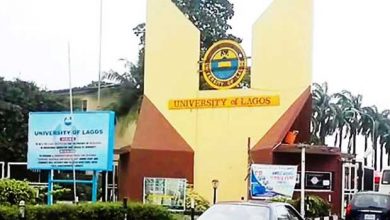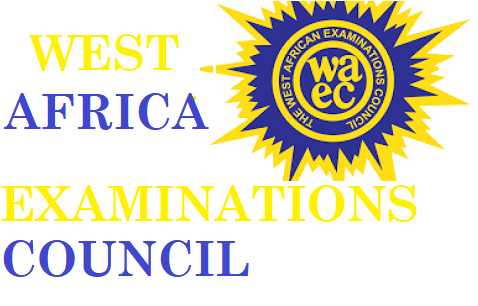
WAEC Syllabus for Sculpture
WAEC Syllabus for Sculpture. WAEC Syllabus for Sculpture is available for all candidates who want to participate in the examination. The West African examination council (WAEC) has officially introduced a syllabus that will guide all the WAEC candidates who wish to write the WAEC examination this year. For a very successful WAEC Sculpture examination for this year, you need to check out the available areas of concentration. It has been divided into sections with chapters, followed by the topics to be covered in preparation for the exams. In the WAEC Syllabus for Sculpture, you will also see the format of how the WAEC Sculpture questions will be presented.
There are 3 sections to answer questions from. Paper 1 is Objective and paper 2 contains essay questions and paper 3 is the practical section. Where paper one (1) carries 50 minutes for 40 marks; paper two (2) carries 2 hours for 60 marks and paper 3, 80 marks 5 days practicals.
👉 Relocate to Canada Today!
Live, Study and Work in Canada. No Payment is Required! Hurry Now click here to Apply >> Immigrate to Canada
This WAEC syllabus is for both the O’level WAEC and General Certificate Examination (GCE) candidates. Final year students in the senior secondary school level and external candidates are eligible to make use of this syllabus and prepare ahead of the examination. WAEC Syllabus for Sculpture
See the full detailed information concerning the WAEC Sculpture Syllabus below
PREAMBLE
Sculpture has been identified as one of the vocational subjects at the Senior High School Level because of its importance in the sustenance and development of the culture and arts of a society.
OBJECTIVES
The objectives of the syllabus are to test for the candidate’s :
(i) knowledge in the history and development of sculpture,
(ii) ability to explore, identify, select, construct, prepare, use, care for materials and tools,
(iii) knowledge and experience in healthy studio practices.
👉 Relocate to Canada Today!
Live, Study and Work in Canada. No Payment is Required! Hurry Now click here to Apply >> Immigrate to Canada(iv) creative and manipulatory skills in designing and production of various forms of sculpture
by employing the traditions and cultures of the society to arrive at original creations,
(v) skills in the finishing and packaging of sculptures,
(vi) capability to appreciate and critique works of sculpture,
(vii) ability to plan and establish a small-scale industry.
SCHEME OF EXAMINATION
There will be three papers, Papers 1, 2 and 3 all of which must be taken. Papers 1 and 2 will be a composite paper to be taken at one sitting.
PAPER 1: Will consist of forty multiple-choice objective questions all of which must be answered within 50 minutes for 40 marks.
PAPER 2: Will consist of six essay-type questions. Candidates will be required to answer four questions within 2 hours for 60 marks.
PAPER 3: Will be two practical projects out of which candidates will execute one within five days, working for six hours each of the days. The paper will carry 80 marks.
The questions will be sent to the candidates two weeks before the execution
period for candidates to study. Designing of sketches and preparatory notes
should also be done within the two weeks prior to the execution of the project.
These will carry 20 marks. The total mark for the paper is therefore 100.
DETAILED SYLLABUS
Sculpture, as applied in this syllabus, includes the general knowledge of the history and development of the vocation, selection and use of tools and materials, health hazards and safety precautions, production of works, their finishing and packaging techniques and marketing strategies of the products.
Candidates will be expected to respond adequately to questions drawn from all aspects of sculpture in their objective, essay and practical forms. Questions will be drawn from the following areas:
(i) Sculpture as a Vocation:
Definition of sculpture, history and rationale for studying sculpture, career opportunies, the sculpture industry, methods of making sculpture i.e. carving, modelling, casting, construction and assemblage, etc.
(ii) Exploration of materials, tools and equipment:
(a) Carving – identification and uses of tools, e.g gouges, mallets, chisels, saws, adze, etc. Methods of using various tools; care of tools to prevent rust, damage and promote longevity, (clean and oil metal parts). Keep tools in tool box.
Equipment: table, bench vices, clamps, bench-screws, power tools, sprayers, grinders, drills, chain saw, etc. Care and maintenance: clean and oil regularly.
(b) Modelling – identification and uses of modelling tools, eg. spatula, calipers,frog (cutting wire), throne. Methods of modelling: pinching, slabbing, coiling and hollowing. Care and maintenance: care to prevent damage, clean, wash and dry.
(c) Equipment: modelling stand, modelling table, turn table.
- Casting – identification and uses of casting tools, e.g.spatula, kidney, lost wax, sand casting, cold casting, plaster, cement, wax and slip casting, paper, etc.Equipment for casting: crucibles, tongs, safety equipment, gloves, goggles, masks, etc.
(d) Construction and assemblage – identification and uses of tools, eg. hacksaw,
wires, hammers, saw, chisels, pincers, rasps files etc.; methods of construction and assemblage, eg. riveting, welding, tying, nailing, soldering, sewing, gluing etc.
Equipment: soldering machine, arc-welding machine, goggles, etc.
(e) Safety measures and precaution – Carving: wearing protective covering i.e. glasses,
respiratory aid, earplugs, boots, etc, carve away from the body.
Modelling: nose guard for working with dry clay, POP, cement, etc, boots, overall clothing. Casting: protective clothing for the body and face, boots, glass, gloves. Construction and Assemblage: protection from naked fire and electric wires, working on dry areas, wearing boots, avoid spillage, inhaling gases and dusty materials.
(f) Sources of tools and equipment – Tools: blacksmith shop, carpentry, hardware shops (eg. Sambraco Enterprise, (Accra).
(iii) Material – carving: ivory from elephants, whitehog etc, stone, wood from the forest, sawmills, timber market, from the farms; modelling – clay from river banks, marshy
areas, valleys, road construction sites, dug wells, environment and hardware shops, others: environment and shops e.g. POP, cement and paper.
Maintenance – keep wet clay in bins or polythene, cement and POP in dry places, wax must be stored in a cool place, iron rods must be kept from moist condition, wood must be kept under shed or indoors.
(iv) Preliminary Design – Meaning and importance of preliminary design: serves as a guide or gives an idea of the end product and also prevents waste of material and saves time. Idea development: sketching and drawing, planning and organization of ideas (manual and computer aided design), preparation of models for reference.
(v) Method of Production – Production Process – Direct/Indirect
Method of carving (relief and in the round), engraving, whittling,chipping chiseling, blocking, blasting, etc. Modelling: pinching, coiling, hollowing, scooping, slabbing.
Casting: moulding, lost wax casting, cold casting, waste mould, casting piece mould, casting, sand casting, repouse layering. Construction and Assemblage: welding, soldering, riveting hammering, joining, pressing, sewing, knotting, repouse filigree (Quilling), etc.
(vi) Lettering
Types of lettering: e.g. block, gothic, freestyle, italics, Roman, etc Method of execution: manual and computer – stenciling, carving, embossing, moulding, reflexive, scorching, etching casting, forging, modelling casting. Application of lettering/uses -plaques, memorials, tombstone, ornamental inscription, epitaphs, medals, shield, label. Materials for lettering – paper, leather, stone, wood, POP, rubber plastic clay, etc. Tools for lettering – chisels, lino cutters, gouges, spatula, knives, hammer, mallets, scooping tool, computer software, pencils, lettering pens, soldering rod, etc.
(vii) Decoration and Finishing
Types of Decoration – eg. incision, engraving, scorching, painting, varnishing, burnishing, embossing, stamping, texturing, smoking, sand blasting, inlaying etc. Methods of decoration, e.g. cutting into surface with tools, pressing into surface, stamping on surface etc.
Types of Finishing – e.g. polishing, painting,, varnishing, waxing, smoothing, sanding, texturing, etc. Importance of Decoration and Finishing – eg. adds value, preservation, protection, durability, easy to identify, socio-economic importance, high income generation, generation of foreign exchange, boost up exportation, promotes tourism, aesthetics, etc. Materials – eg. brasso, paint, wax, cowries, bones, raffia, beads, straw, wood, etc. Tools – eg. gouges, knives, sprayers, brushes, pincers, files, abrasive papers, etc.
(viii) Establishment of Small-scale Industry
Factors to be considered – eg. types of raw materials, labour, transport and communication, location of market, siting of industry/factory, insurance, entrepreneurship, utility services, branding, quality control, capital, etc. Socio economic importance e.g. income generation, promotion of tourism, foreign exchange earnings, high recognition of sculpture, promotion of art and appreciation, etc. Short falls in finishing – eg. uneven/irregular surface textures, disproportionate figures, cracks and dents on works, unstable/imbalanced works, smearing/messy, etc. Ethics of Quality Control – eg. use of quality materials, appropriate subject, avoidance of indecent themes, (eg. vulgarism, pornography, derogatory and insulting signs and language), quality finishing, environmental friendly material, maintenance of clean environment. Ideal studio.
Packaging and Handling – eg. types of packaging: primary, secondary and tertiary. Tools and materials for packaging – eg. Tools; knife, hammer, needle, saw, pliers, drills, staplers, scissors, etc.Materials: plywood, plastic bags, fabrics, paper, glue, cardboard, foam, saw dust, sand, wood-shavings, styrofoam, adhesive masking tape, cellotape, etc.
Techniques of Packaging – eg. boring, wrapping, nailing, gluing, tying, boxing, etc. Importance of Packaging and
Handling – eg. prevention of damage, shocks, hurt and damp conditions, facilitate easy and safe handling, add value to item, identification, etc.
(ix) Costing, Pricing and Marketing
Marketing of art products includes costing and pricing as well. Basic Marketing Strategies – eg. advertising by posters,hand bill, television, radio, word of mouth, exhibitions, bazaars,and fairs. Effective decoration and finishing, attractive packaging transportation, are also forms of marketing.
Types of Exhibition – eg. general, specialized.
Planning of Exhibitions – factors to be considered eg. type of exhibition, indoor and outdoor, what to exhibit, theme, cost involved in the exhibition, publicity, expected number
of guests, duration/time, mounting of exhibitions, general layout for space arrangements,
security, visitor’s book, sales, opening and closing, etc.
Mounting Exhibits – factors to be considered eg. colour scheme and balance, size, weight and height of exhibits, effect of light and ventilation of room, creation of free movement for viewing exhibits, decorate room with flowers, ribbons etc., creation of centre of attraction, eg. modelling, video shows, invitations, adverts, press release, brochures and catalogues, sales list, etc.
Importance of Exhibition – eg. it offers avenue for sales of product, serves as advertisement for products, expresses new technology to the society, promotes the artist, education, awareness creation, edifying, etc. .
(x) Managing Sculpture Enterprise
Knowledge on management is necessary. Functions of a manager – Management process involves: planning, organization, controlling, etc. additional skills for management include
supervision, budgeting, book keeping and computer skills. Attributes of a Manager – e.g. perseverance, commitment, temperament, courage to take risk.
Controlling Business Risk – Types of risk: direct and indirect – eg. Direct: theft, fire, misuse/misappropriation of capital and profit. Indirect Risk: lack of sales due to faulty and low quality products or wrong business location, currency inflation problem, introduction of new taxes, change of labour laws, etc. Measures of Control – e.g. theft (regular check of stocks and finished products), hire an accountant/bookkeeper to check the business account every month. Increase vigilance and security to minimize theft, fires (eg. use good quality electrical appliances, make good quality electrical connections to prevent fire outbreak, make regular check on fire extinguishers)
(xi) Appreciation and Criticism in Sculpture
The process of appreciation and evaluation in sculpture; terms in appreciating 3-dimentional sculptures – e.g. content, forms, subject matter, symbolism, materials and techniques, artist and style. Critiquing Works of art.
(xii) Portfolio of Works
Method of Compiling works; eg. photographs arranged and labelled in album or slide holder in chronological/stylistic thematic order, pictures of work stored electronically on CD, video tape, computer hard disk. Note: photographs, drawings and sketches should be mounted on cardboards and labelled, etc. Uses of Portfolio – e.g. reference and study, exhibition of works, self evaluation. Importance of Portfolio – e.g. keep record of works, track development of skills, for inspiration, reveals artists weakness, develop creative ability as well as quality control, help artist to be focused, develop for further studies, self esteem and confidence.
(xiii) Professional practices
Developing a Business plan
Artist’s Statement
Definition and Importance
Business Plan
Definition, Importance and Preparation (steps involved)
Business Brochure and Card
Definition and Importance
(xiv) Museum and Gallery Studies
– Definition, history and development of the museum.
– Functions and socio-economic importance of the museum.
– The administrative structure of the museum.
– Authenticity and neutrality of the museum.
– Examples of museums and their activities.
deal Studio – eg. indoor areas, outdoor space, facilities needed: eg. water, adequate lighting, good ventilation, fire extinguishers, office, washroom, various section for various types of work (eg. carving, casting, welding, modelling), storage area for eg. tools and materials, raw materials, for finished works etc.
Check and Confirm: How much is Dollar to Naira Pounds to Naira Rate Today
